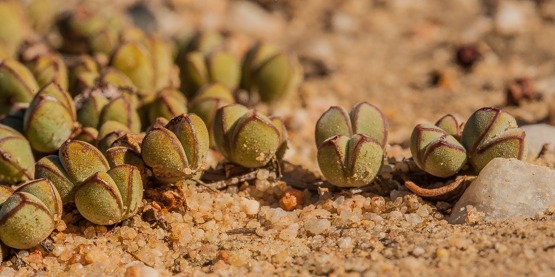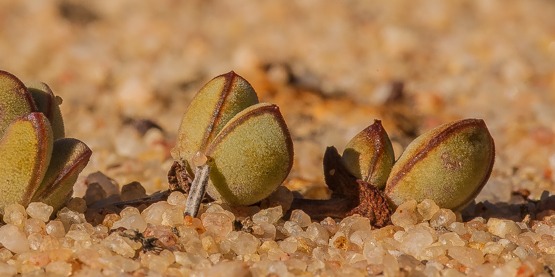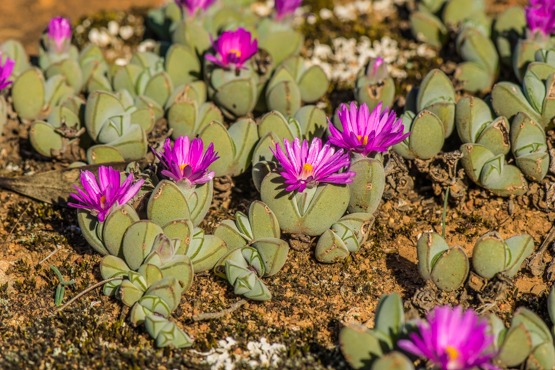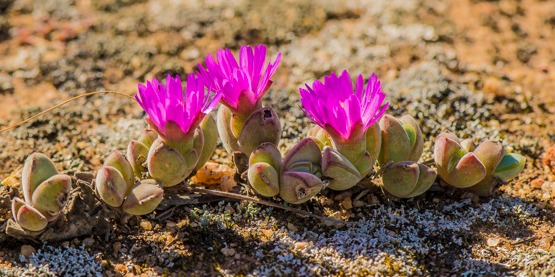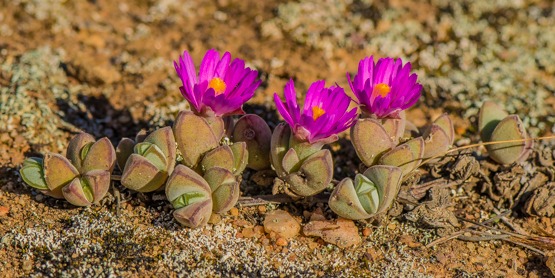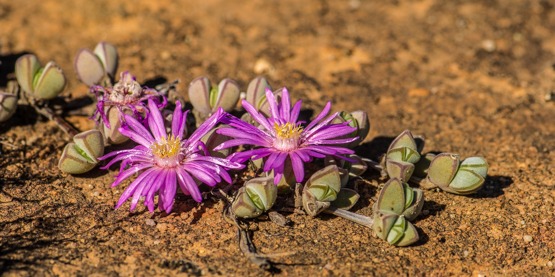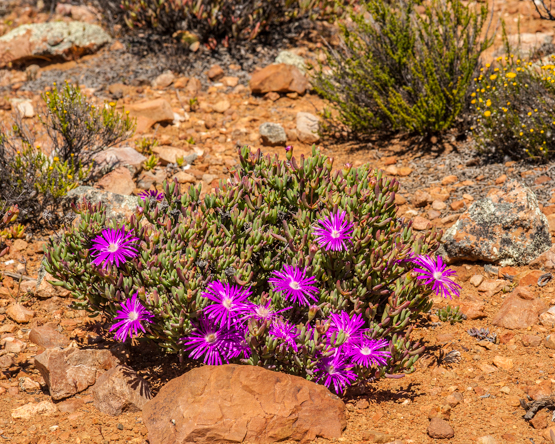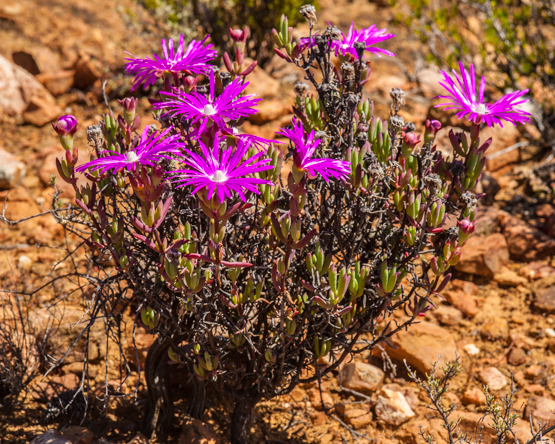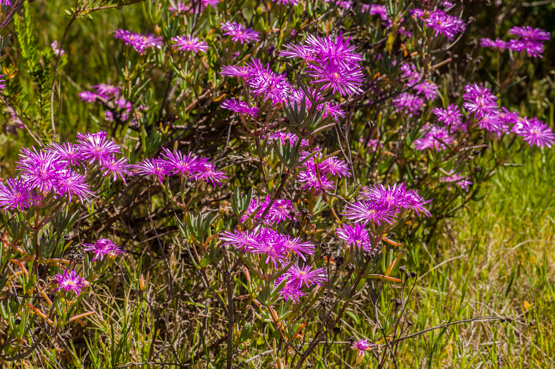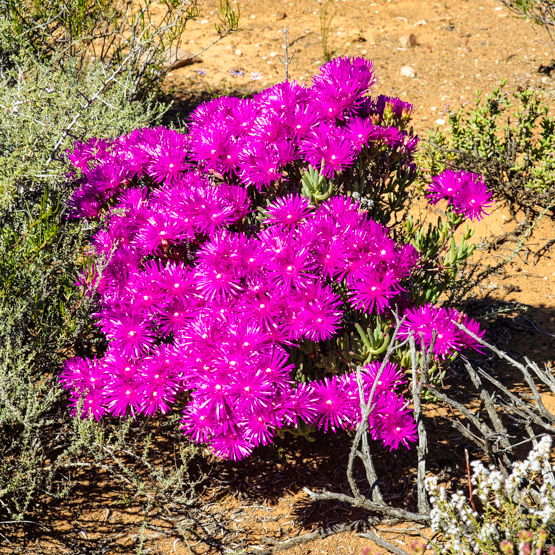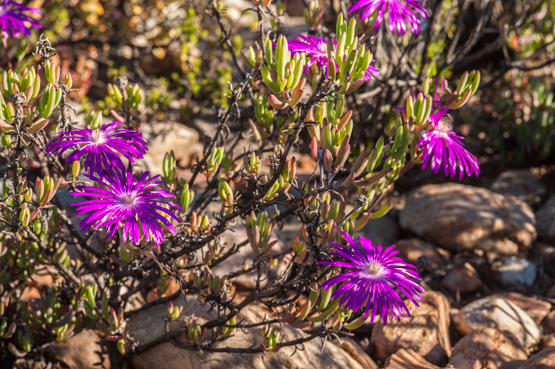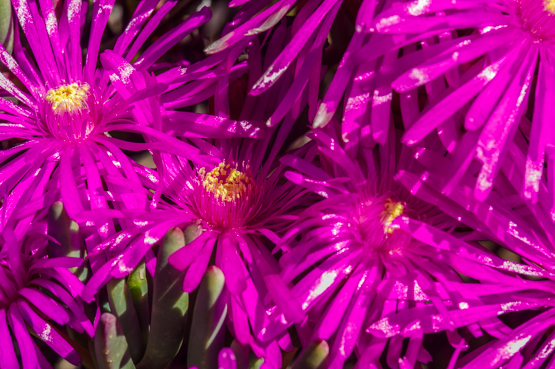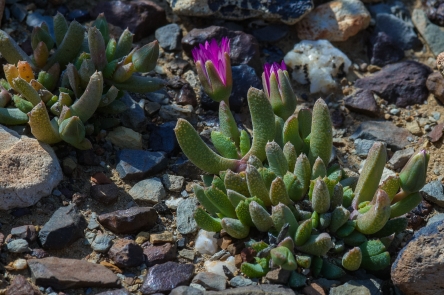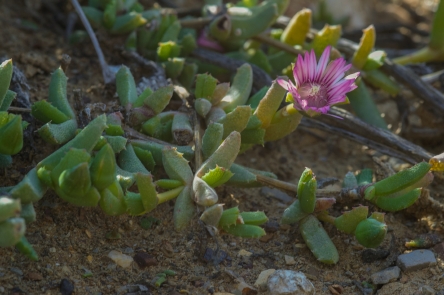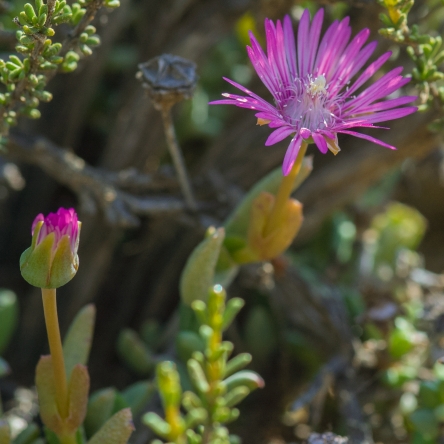If I were to make a list of my favourite succulents, this species would have quite a high ranking on it. I’m not completely sure why that is: because of the beautifully shaped and coloured leaves, because of the delicate way the plants hug the ground, because of the size of the flowers compared to the rest of the plant or maybe a combination of all this. Their natural habitat is in shallow pans on rocks pavements, often together with moss, in the northernmost part of the Cape Province from the Bokkeveld Mts. to Piketberg. This area receives about 125 mm rainfall per year, mainly in winter.
The plants are mat-forming with creeping stems to 17 cm long, which form roots at the nodes.
They have boat-shaped, pale grey-green, velvety leaves with dark keel and margins and fused for more than half their length, 6-10 mm long, 5-6 mm wide and 6-8 mm thick.
The flowers are quite large (to 2.5 cm in diameter) and bright pink; they appear between July and October.
Common names: bloukraalvygie, kruipvygie
Note : the name of the species is spelt here with ‘ii’ because ‘Maximilian’ is not considered to be a latinized name, and therefore ‘maximiliani’ has to be corrected by adding an ‘i’ (ICBN Art. 60.11).
